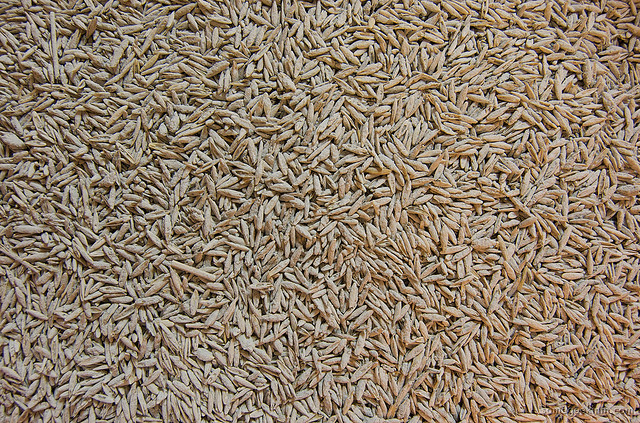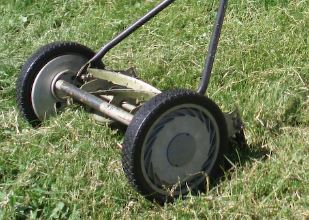In the first part of this two blog series, we looked at how to prepare a lawn area for seeding. This time we look at how to do the seeding itself and what steps you need to take afterwards to get the best possible results from your lawn. Follow these steps and you’ll soon have a fantastic patch of grass that stays looking great for years to come.
PHOTO BY Casey Fleser / CC BY
Sowing your grass seed
The key to successful seeding is to ensure an even spread of the seed while making sure to use enough to generate dense, continuous grass. Exactly how much seed you need to use will depend on the exact blend of species you are using, so make sure to follow the instructions on the packaging. However, in general you will need around 50g per square metre for good coverage.
The two easiest ways to spread your seed are by hand or with a fertiliser spreader. Either way, it is best to work across the area in two different directions using half the seed each time e.g. going from north to south, then east to west. This should ensure even coverage. If you want to be really precise or for larger areas, you could mark out the space into sections with a grid made of string lines and seed each grid square separately with the appropriate amount of seed.
Make sure to have enough spare seed so your can over-seed any areas where the grass is patchy or fails to grow.
Nutrition
Either before or immediately after you spread your grass seed, you should also apply a good quality, slow release, granular lawn feed to the surface. This will provide a steady supply of nutrients to the new grass, ensuring faster, healthier growth and a more robust lawn.
Once the new grass has begun to establish itself, you should consider using a weed and feed product to prevent weeds getting a foothold and to give the new grass a boost.
Watering
To encourage your grass seeds to germinate and grow, it is important to keep them moist. You should therefore water your new lawn up to twice a day for the first couple of weeks after seeding. This watering should be kept light, however, to avoid disturbing the soil too much and affecting the distribution of the seeds or causing water logging. A hose or watering can with a fine head or mister setting is ideal.
After the first couple of weeks, when the grass has begun to establish itself, you can switch to less frequent, heavier watering. At all times make sure to keep an eye on the moisture level of the soil and increase or decrease watering accordingly.
PHOTO BY FLYOVER HANGOVER / CC BY
Mowing
When the grass reaches around 5cm in height, you can begin mowing. Cutting the grass encourages it to spread sideways at the root level and put up new shoots, helping your lawn to thicken and form a denser surface. However, it is important not to cut new grass too short, so keep your mower on its highest setting for the first few cuts, then gradually work down to the desired height.
Proctors are lawn experts and our lawn care products can help you get the very best out of your grass.

























